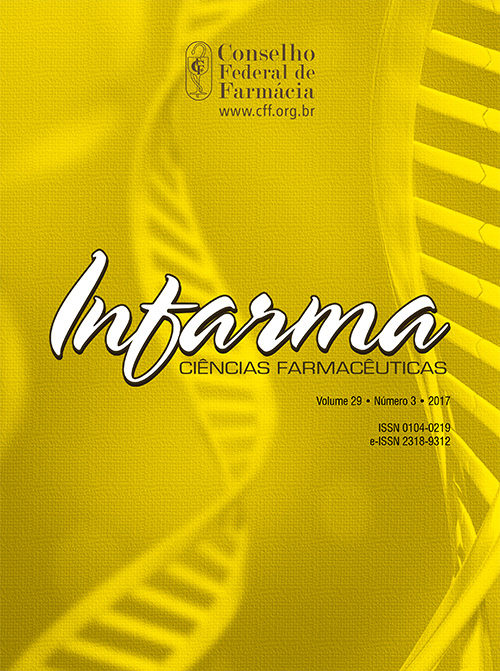OPTIMIZATION AND VALIDATION OF THE VOLUMETRIC ANALYTICAL METHOD FOR THE QUANTIFICATION OF THIOGLYCOLIC ACID IN COSMETIC CREAM
DOI:
https://doi.org/10.14450/2318-9312.v29.e3.a2017.pp214-219Keywords:
validation, titration, hair straightening, thioglycolic acidAbstract
Thioglycolic acid is an active used in capilar cosmetic creams with the function of smoothing, curling and depilating. Resolution RDC 7/2015, from Anvisa, classifies the products in risk grade I and II. For grade I type the normative does not require detailed information about formulation, such as to the mode and restriction of use. However, grade II type needs specific indications, and their characteristics require proof of safety and/or efficacy. Norm RDC 3/2012 approves the list of substances allowed in cosmetics and establish the maximum limit allowed. The products containing thioglycolic acid are classified as risk II and their content is allowed at the maximum concentration of 8.0% w / w for general use, 11.0% for professional and 5% w / w for depilatories. The Brazilian cosmetics industry has registered a growing increase in the use of capilar straighteners, so the control of this active is important to ensure the safety of its use. The objective of this study was to optimize and validate the method for determination of the thioglycolic acid content in substitution to that published in the Guide of Quality Control of Cosmetic Products from Anvisa. The preconized methods were compared with the validation of the method under study. The method was validated using fortified sample at three concentrations (4.0%, 7.0% and 10.0%). For evaluation of the results the statistical tools were the T and F tests for the comparison and validation of the method under study. The obtained results showed that the validated method is suitable for the determination of thioglycolic acid content.Downloads
Published
2017-09-25
How to Cite
Santa Barbara, M. C., & Miyamaru, L. L. (2017). OPTIMIZATION AND VALIDATION OF THE VOLUMETRIC ANALYTICAL METHOD FOR THE QUANTIFICATION OF THIOGLYCOLIC ACID IN COSMETIC CREAM. Infarma - Pharmaceutical Sciences, 29(3), 214–219. https://doi.org/10.14450/2318-9312.v29.e3.a2017.pp214-219
Issue
Section
Original article
License
Authors who publish in this journal agree to the following terms:
- Authors retain the copyright and grant the journal the right of first publication, with the work simultaneously licensed under the Licença Creative Commons Attribution which allows the sharing of work with acknowledgment of authorship and initial publication in this journal.
- Authors are authorized to take additional contracts separately, for non-exclusive distribution of the version of the work published in this journal (e.g. publish in institutional repository or as a book chapter), with acknowledgment of authorship and initial publication in this journal.
- Authors are allowed and encouraged to publish and distribute their work online (e.g. in institutional repositories or on their personal page) at any point before or during the editorial process, as this can generate productive changes as well as increase the impact and Citation of published work (See O Efeito do Acesso Livre ).


